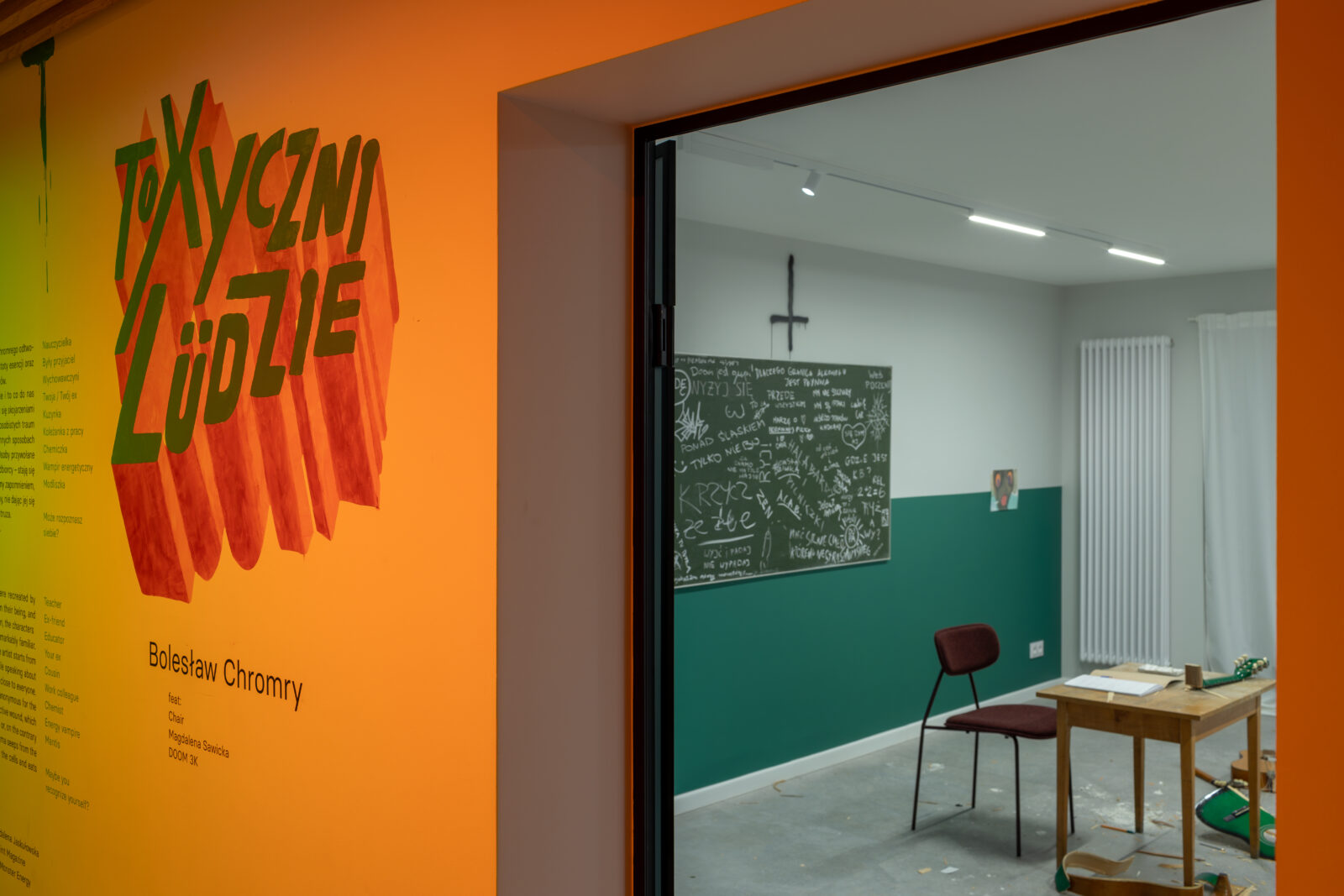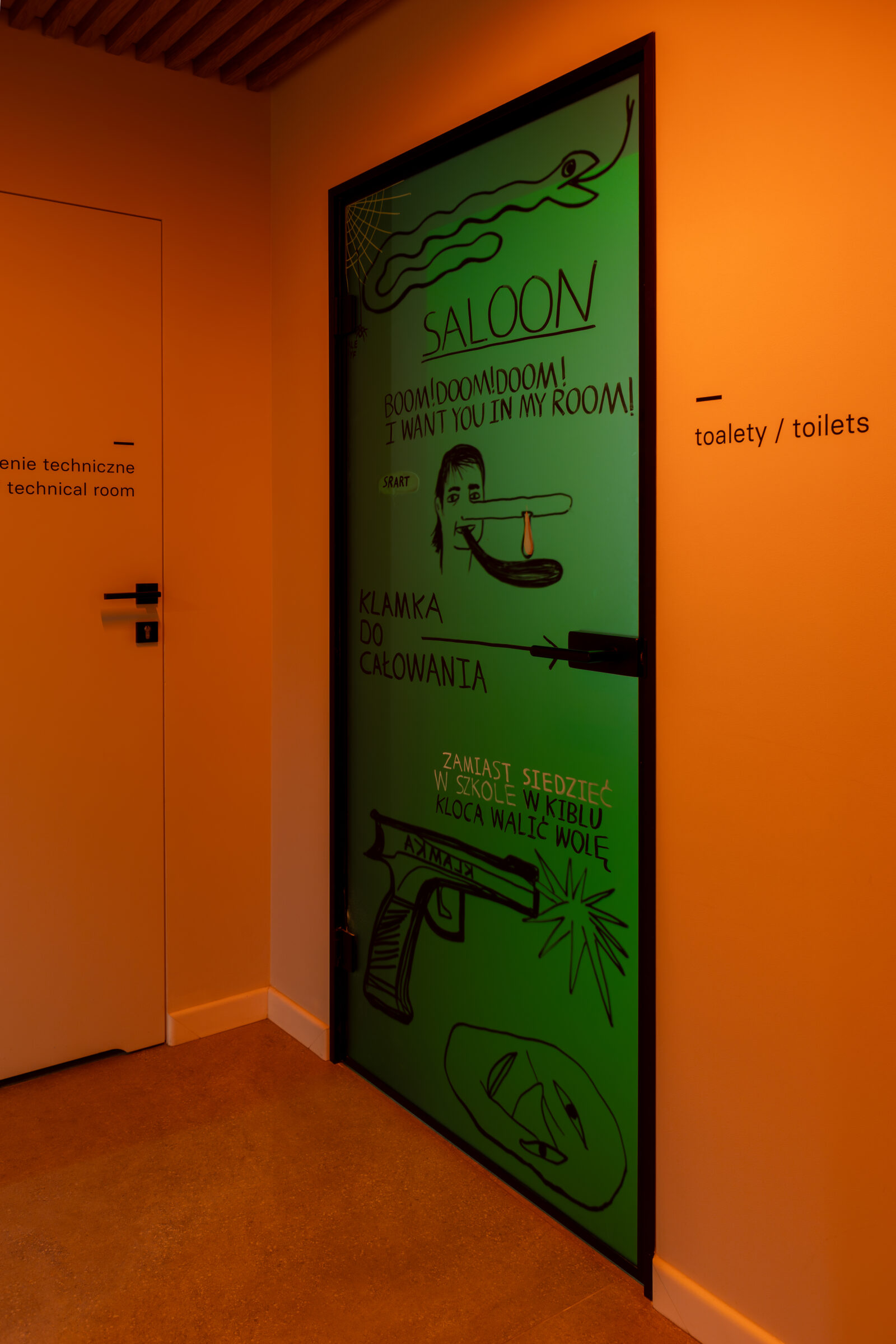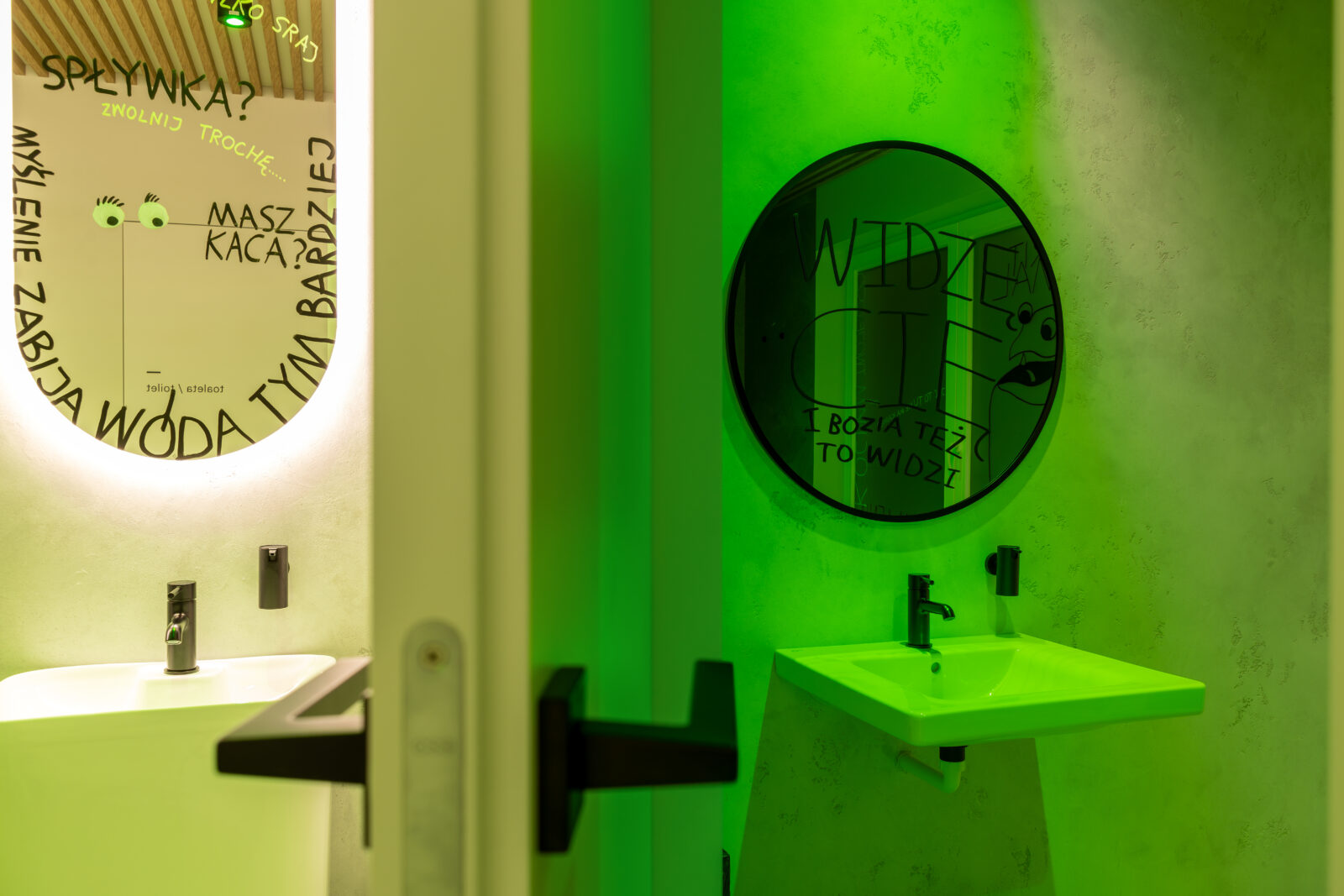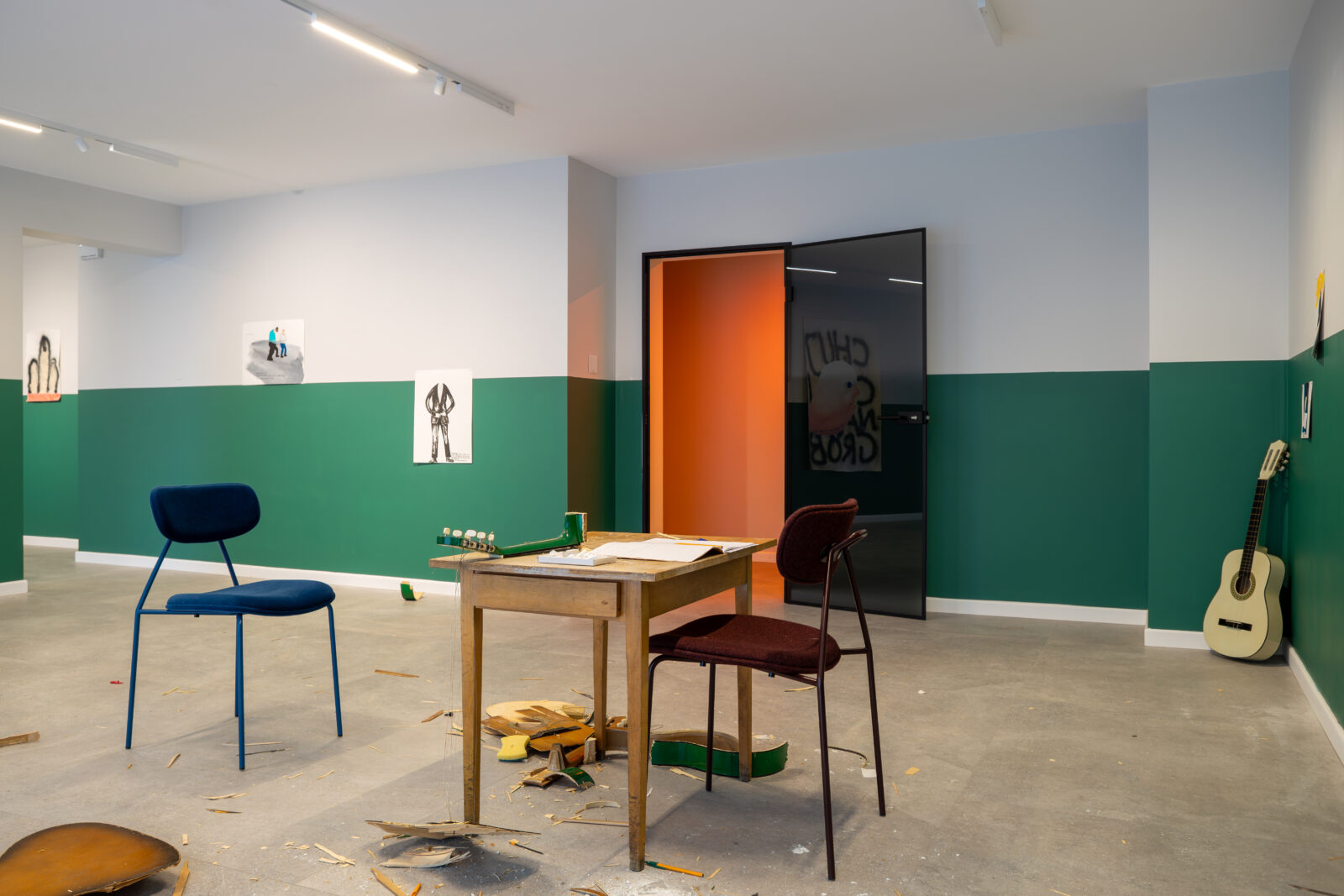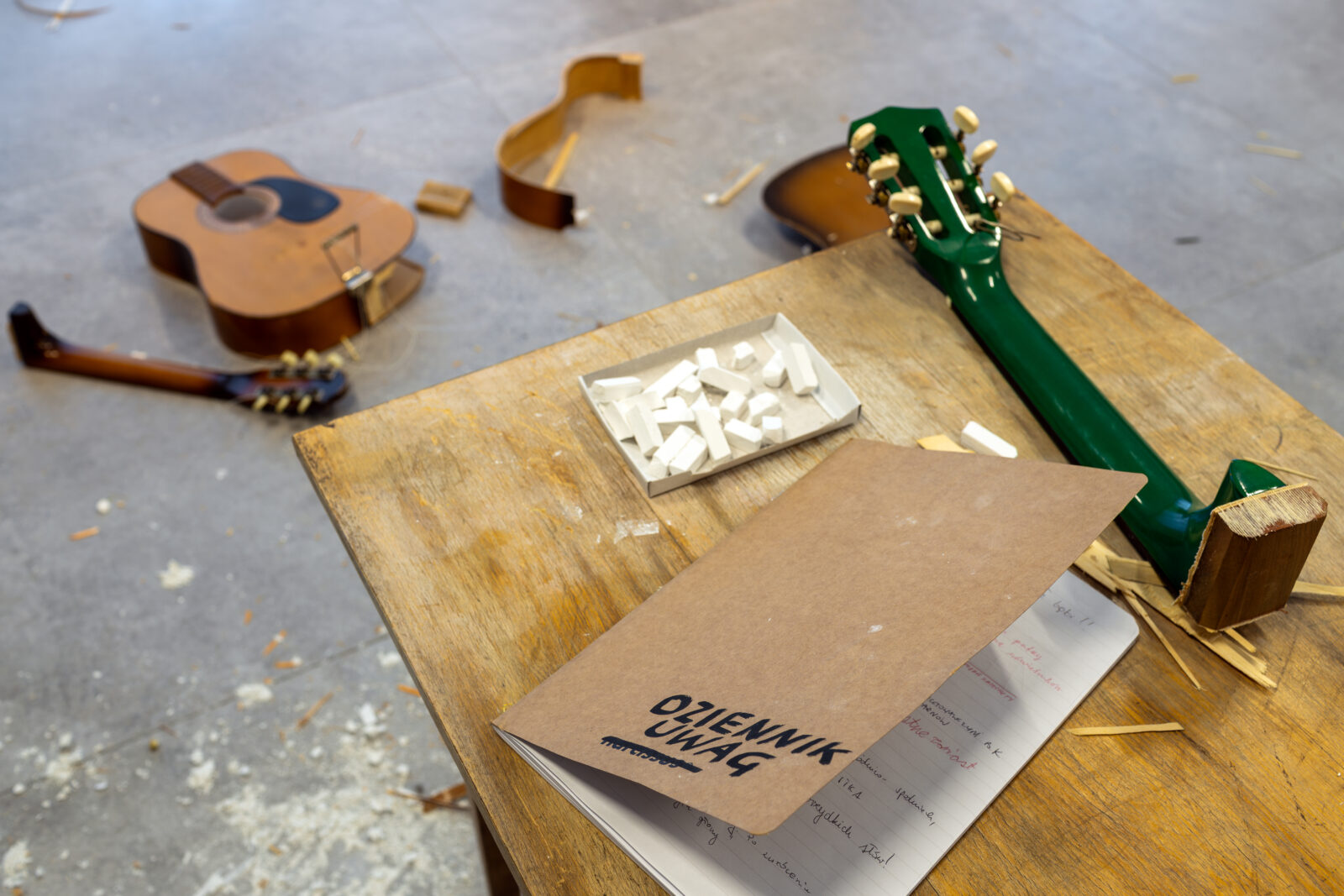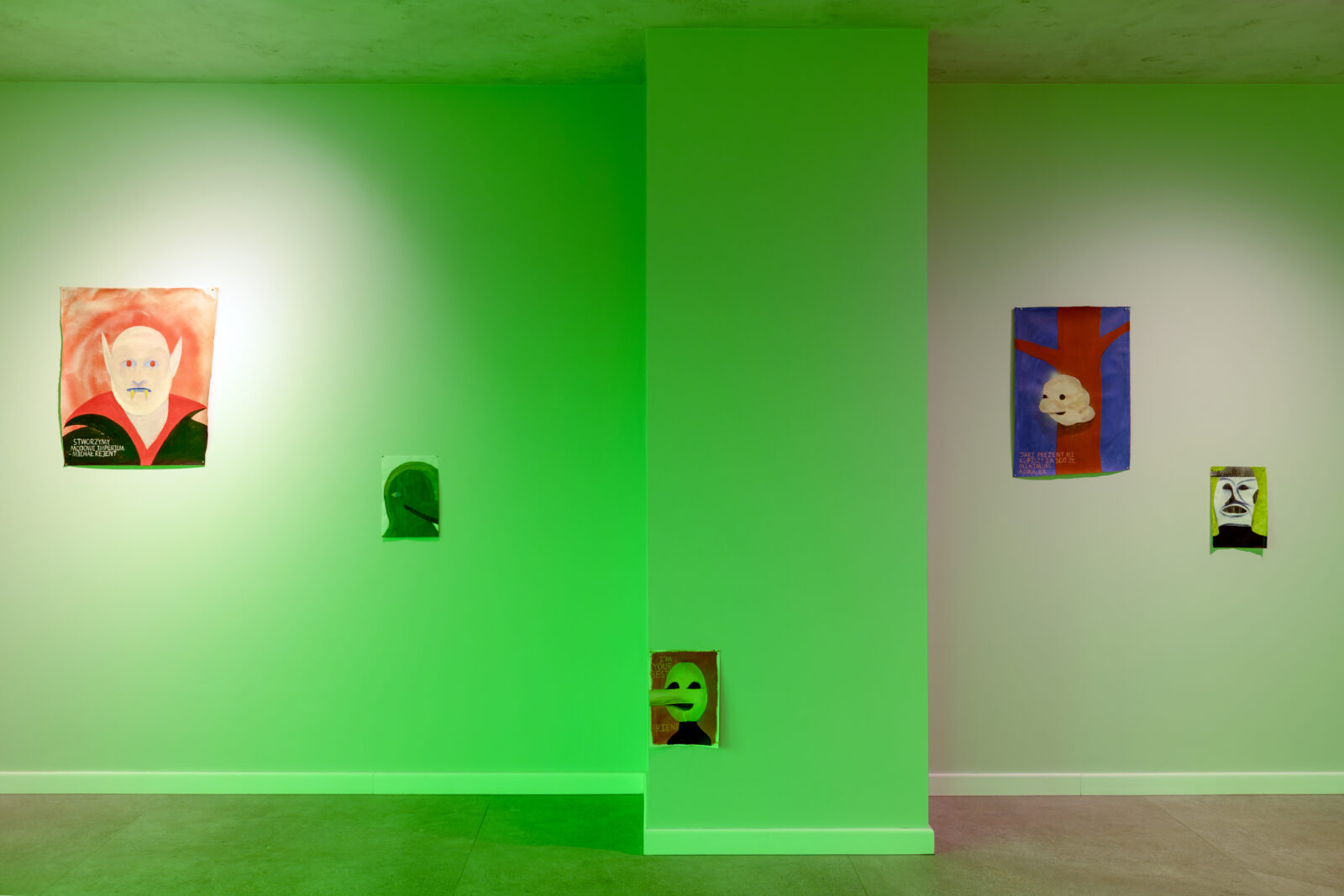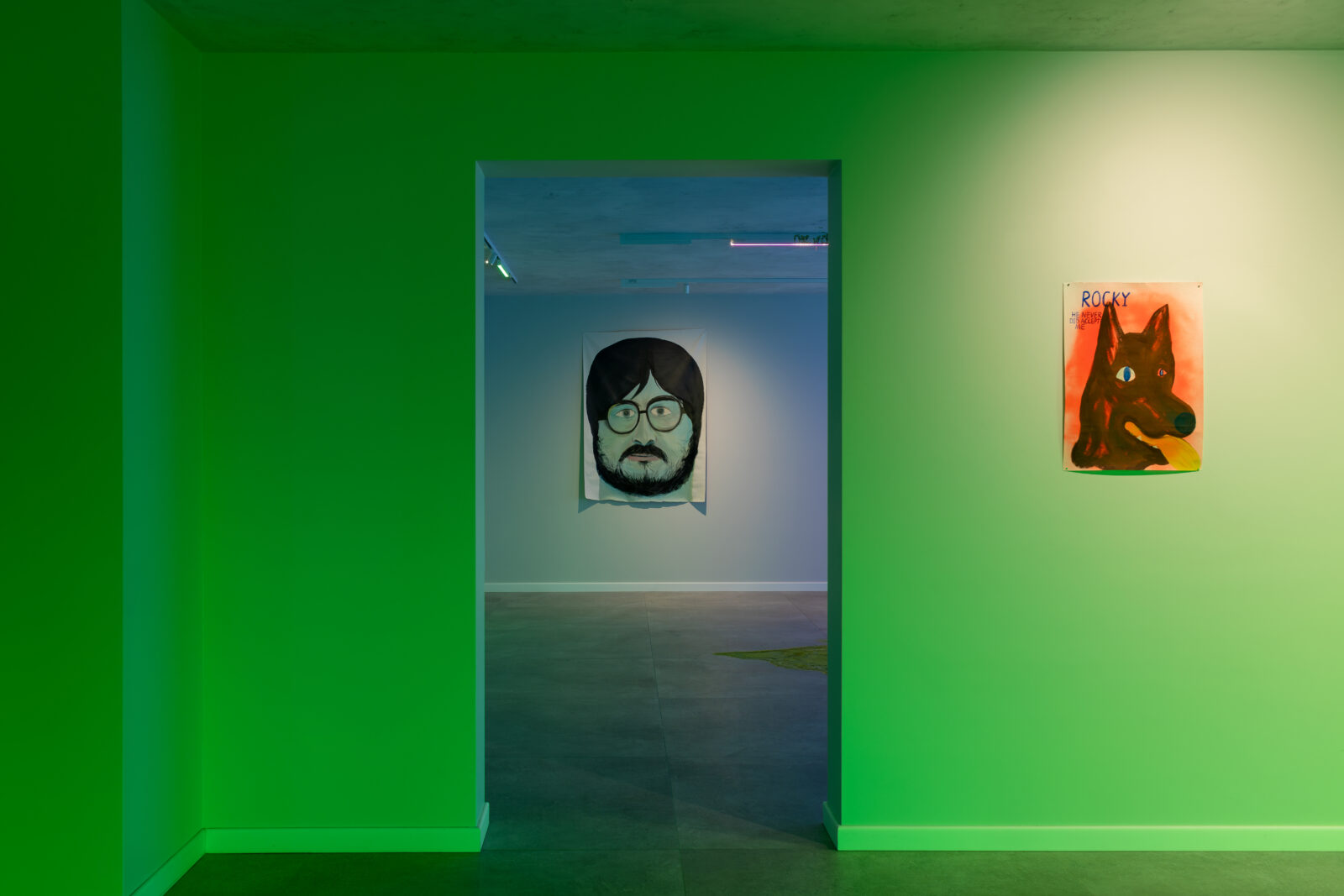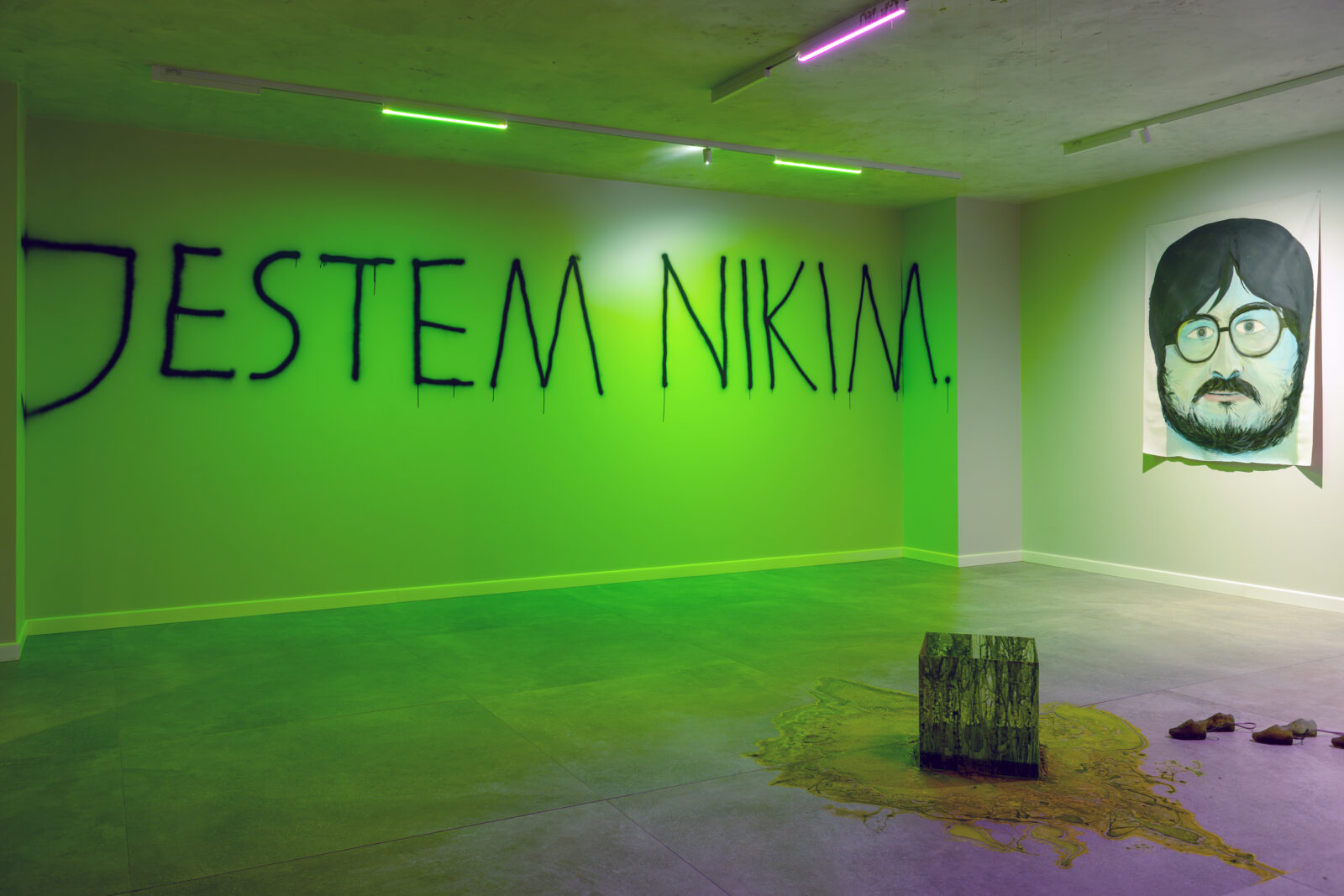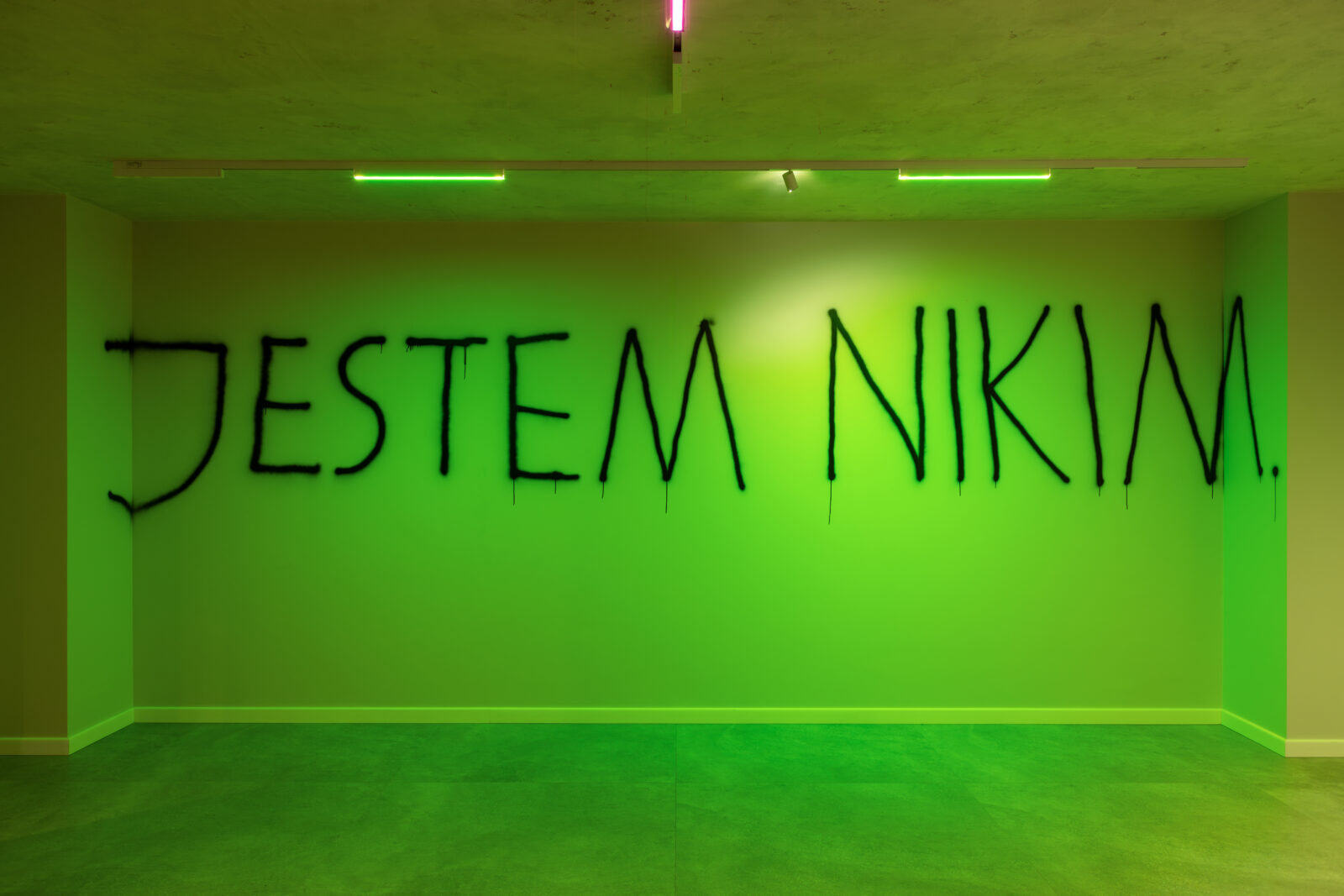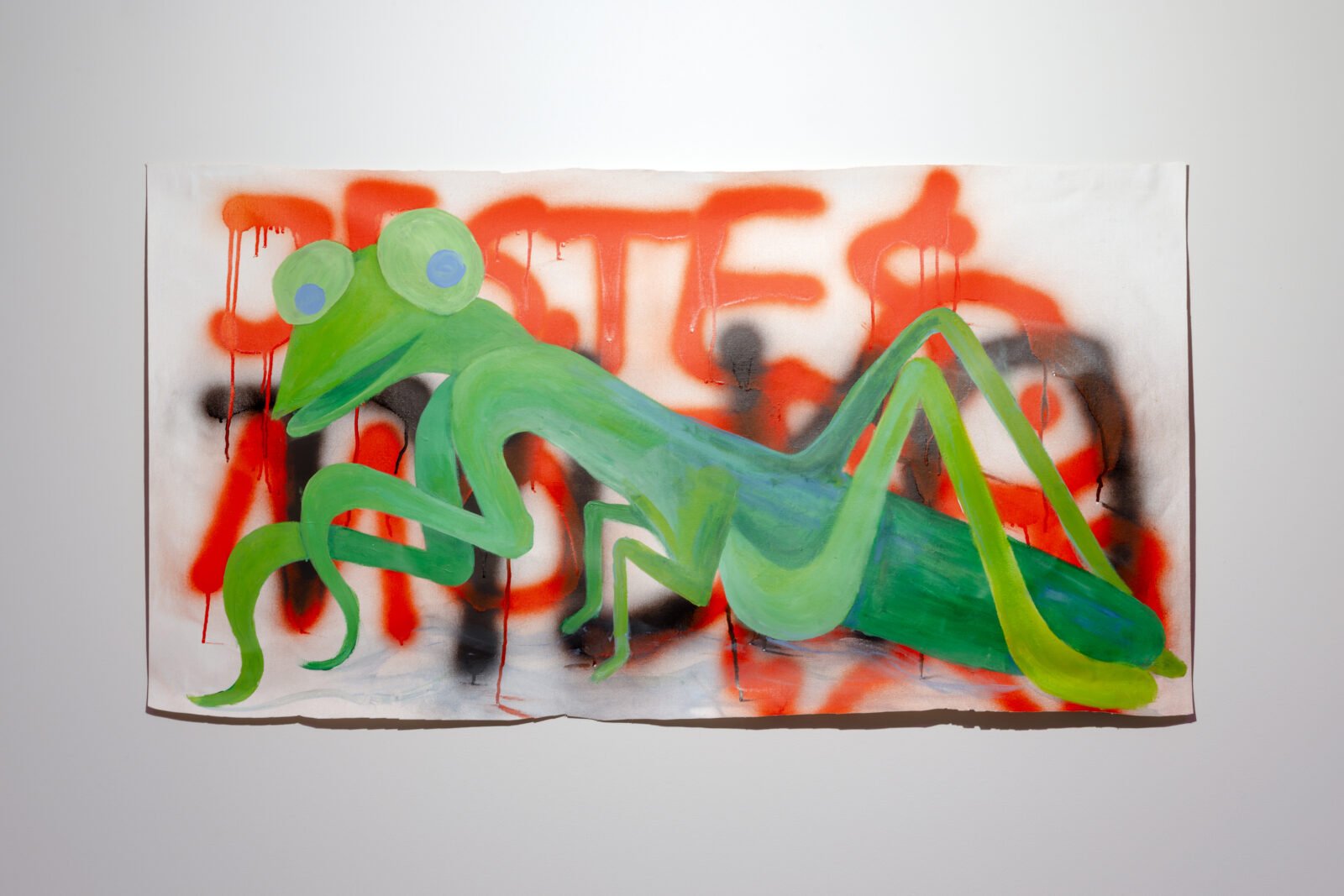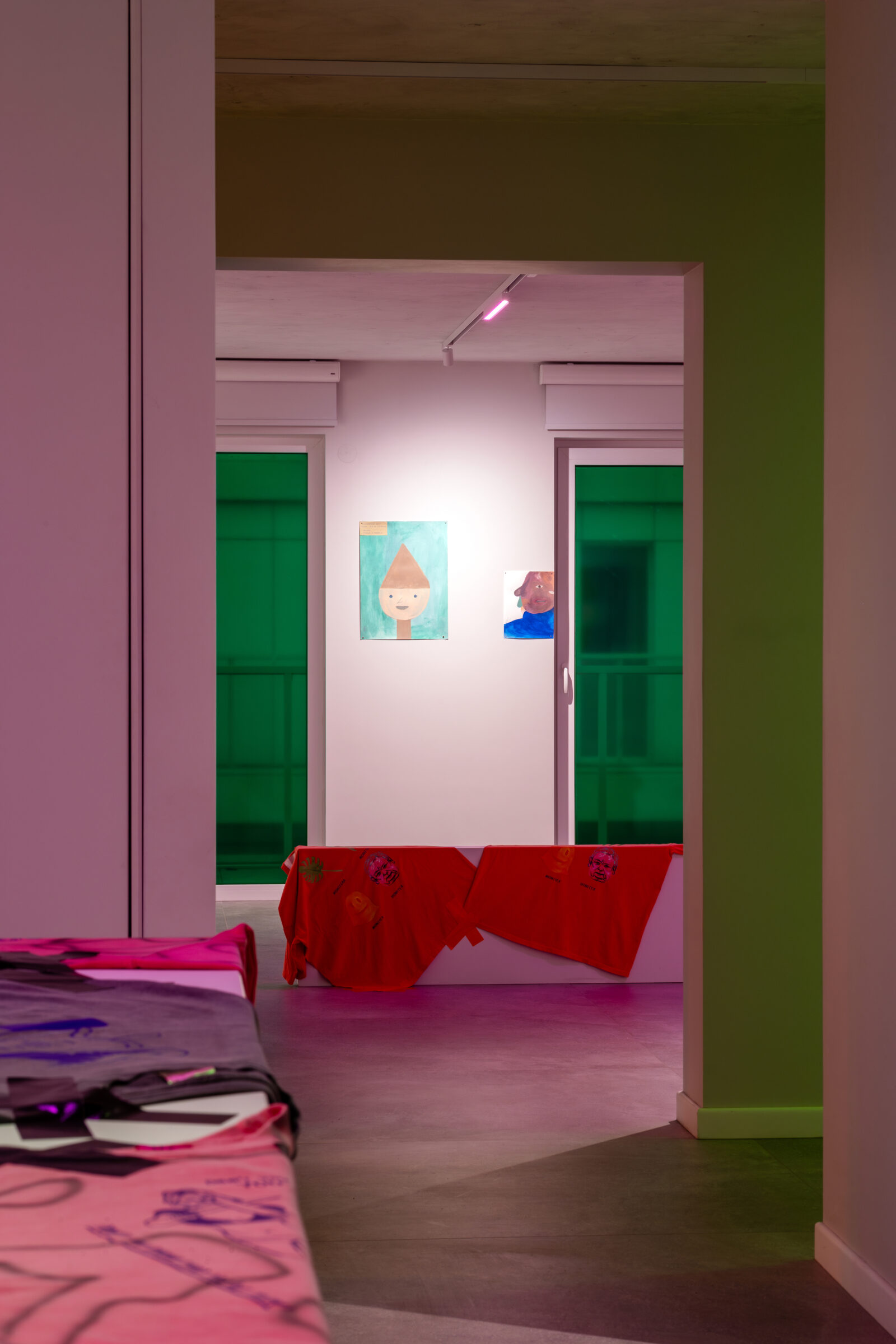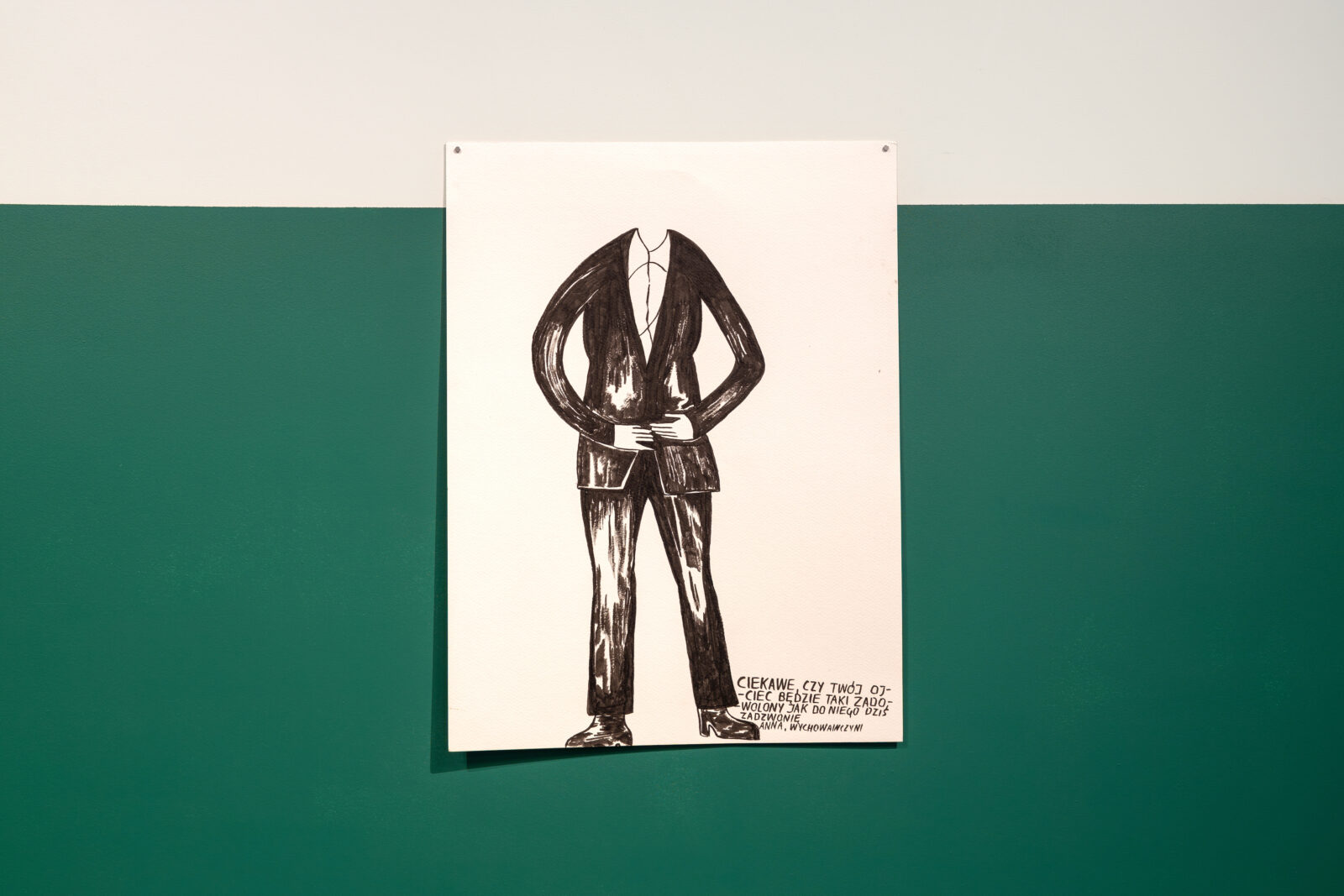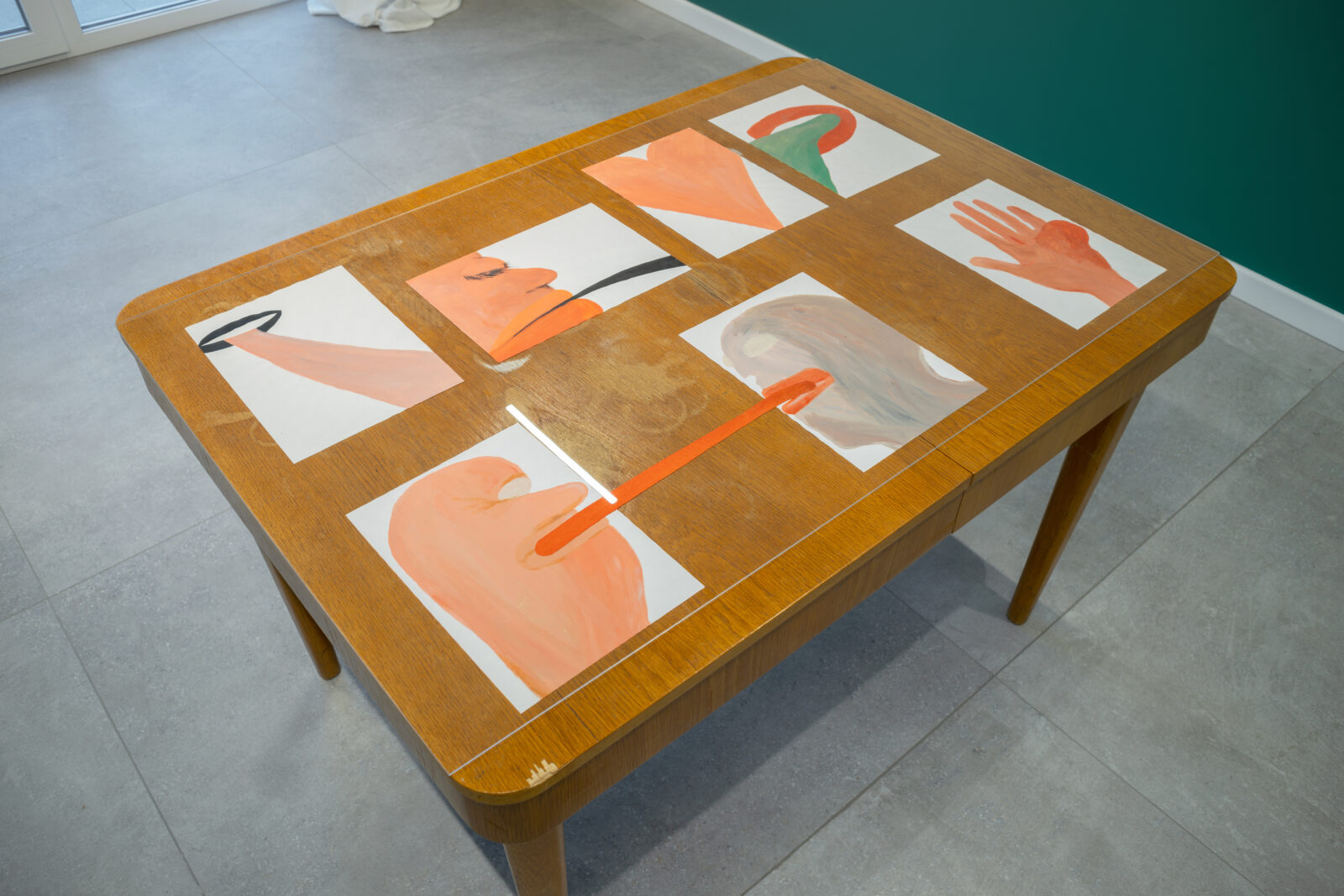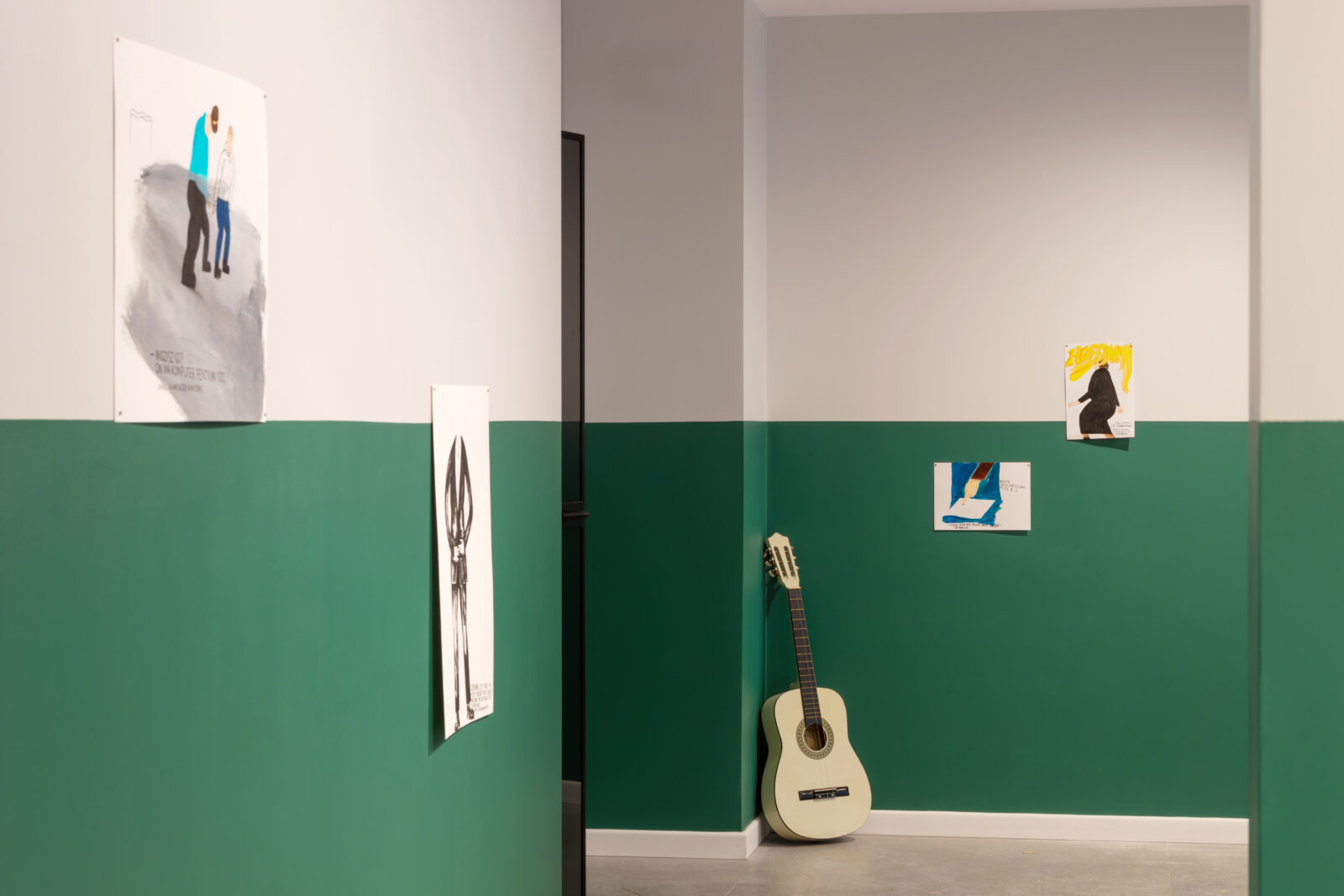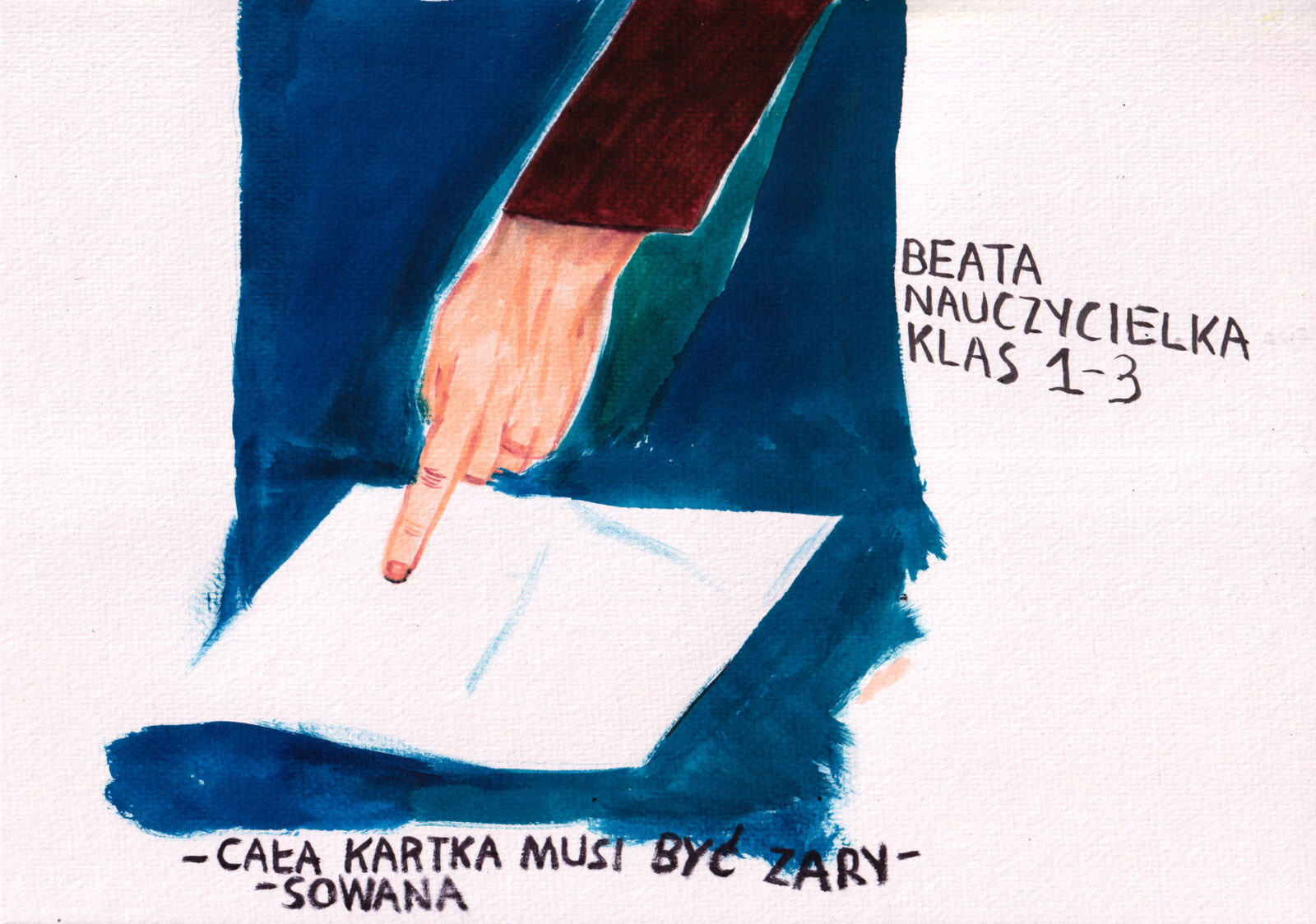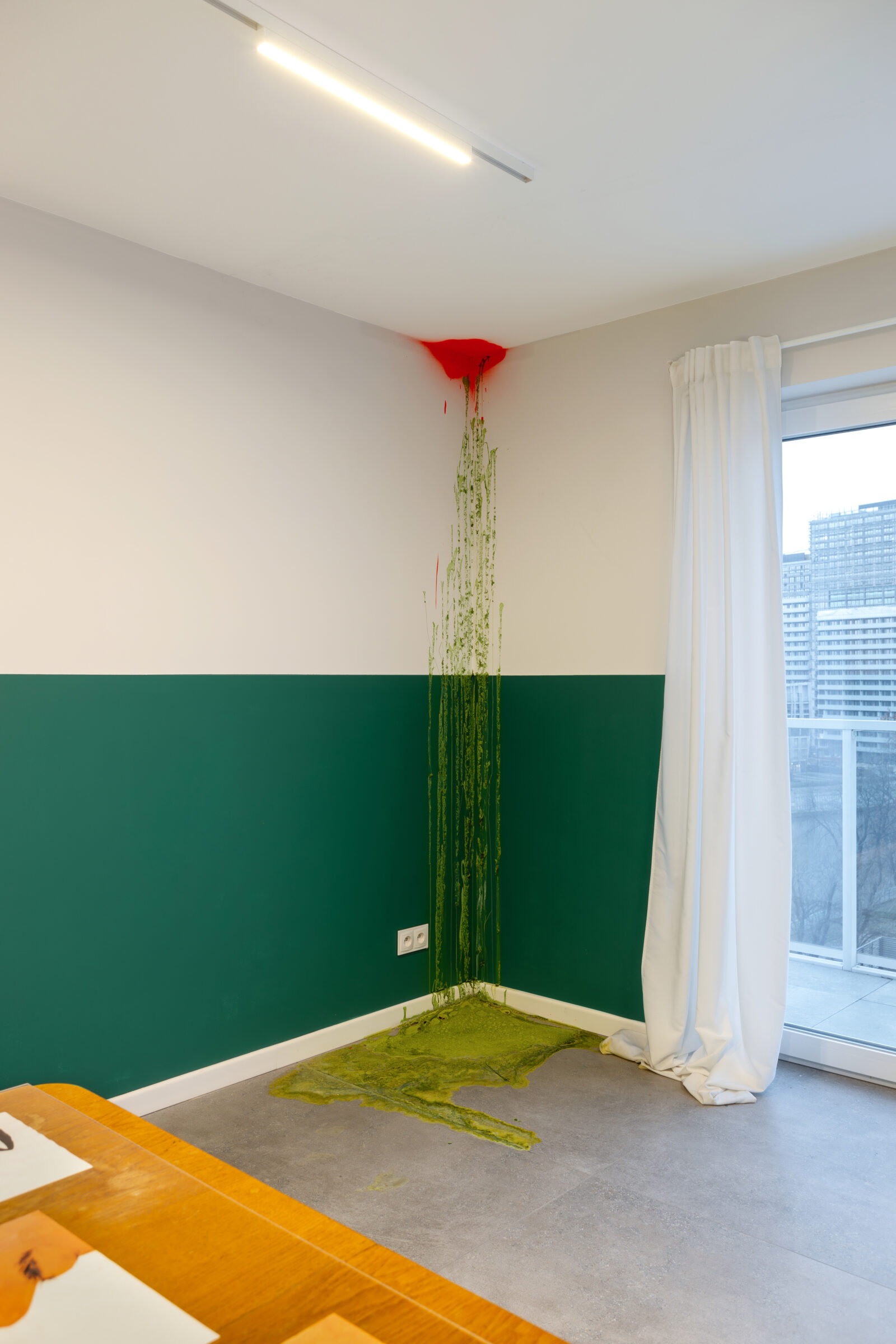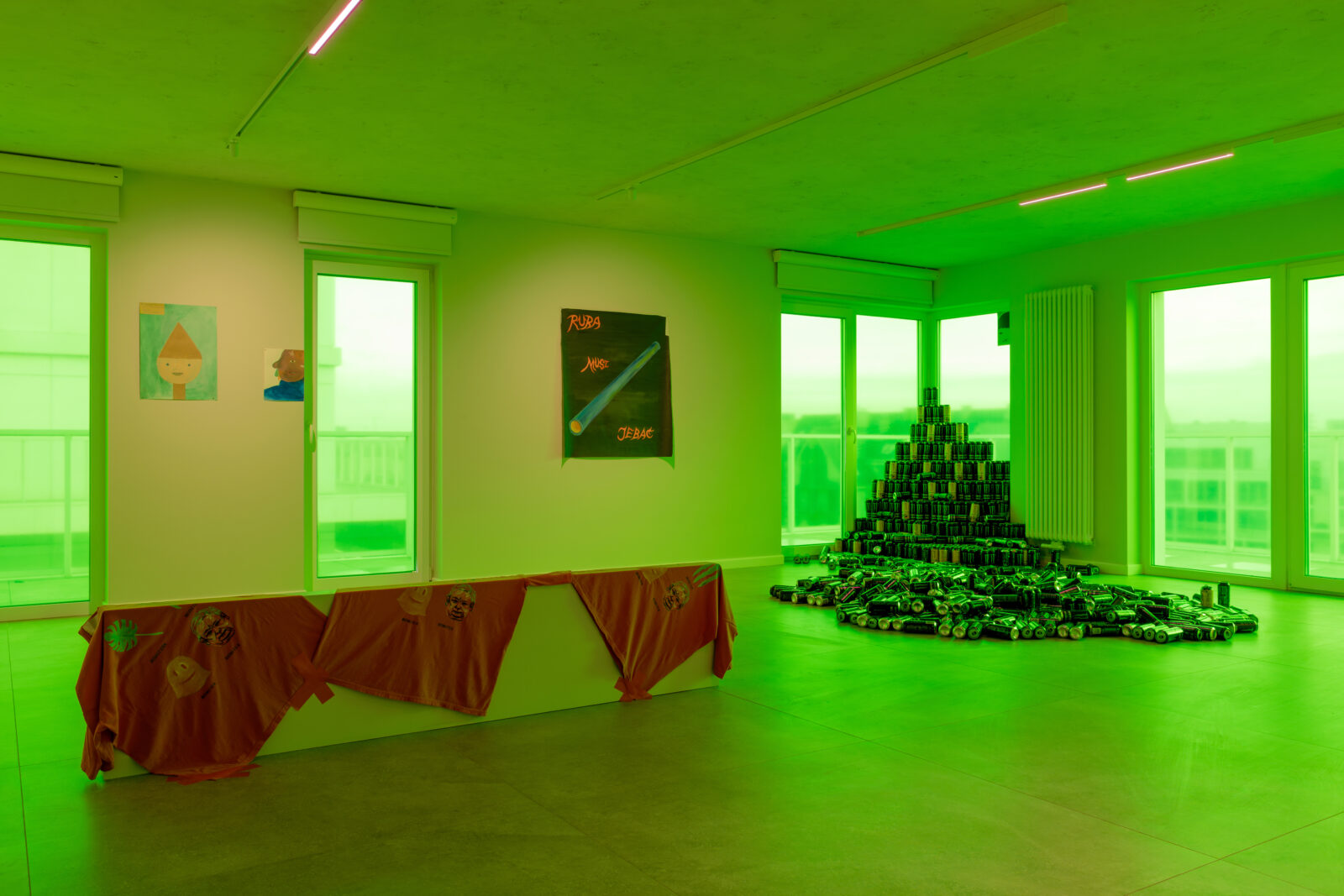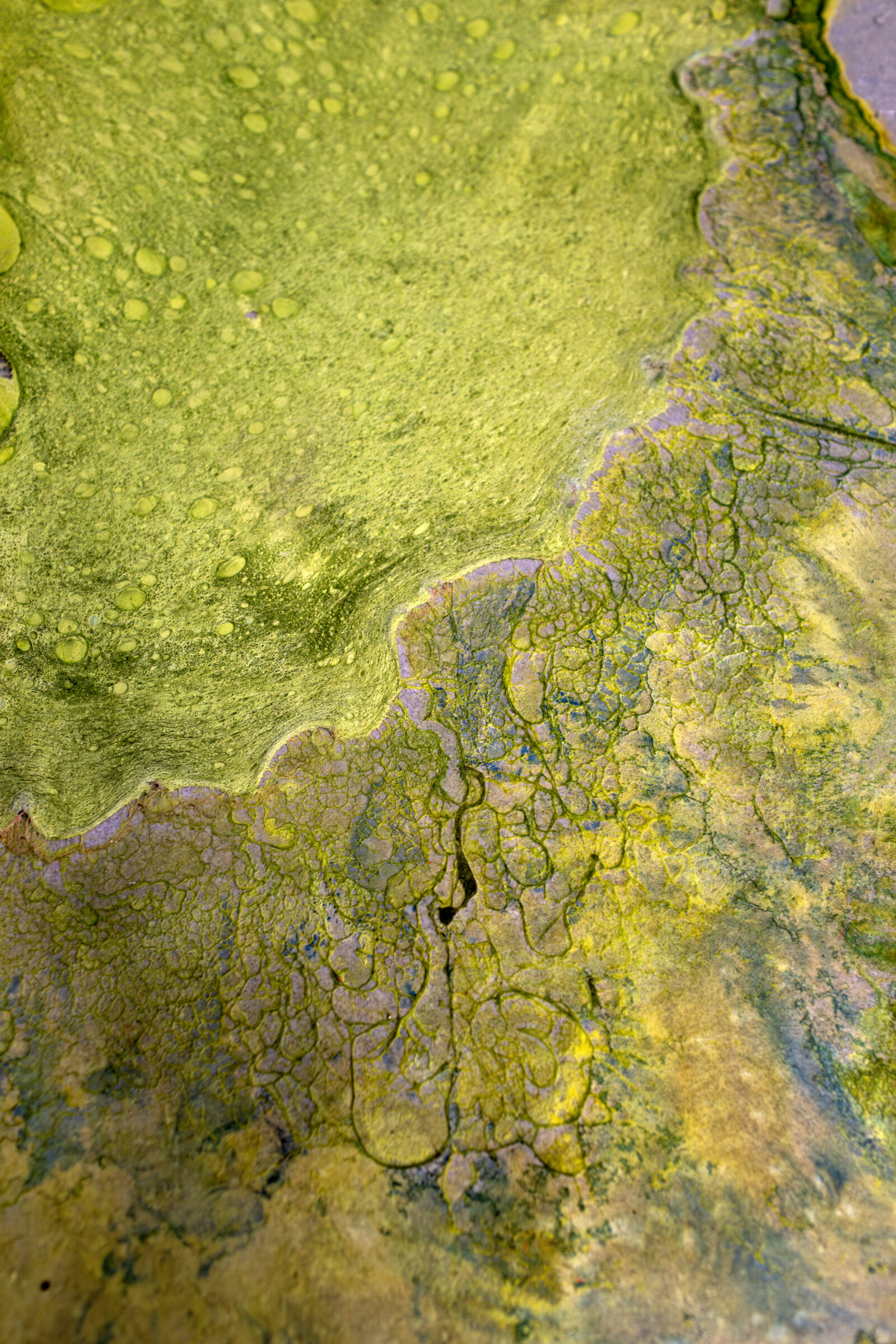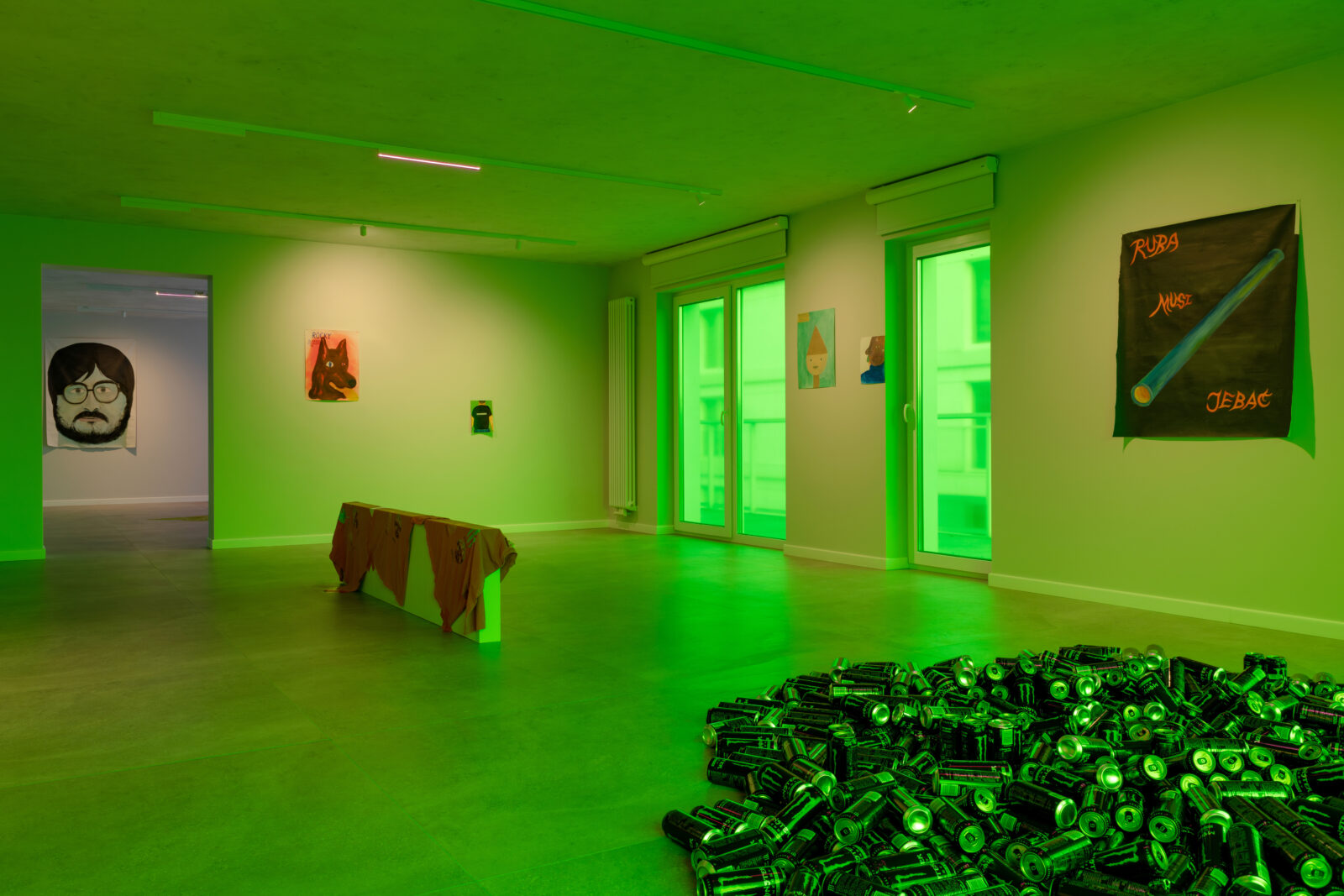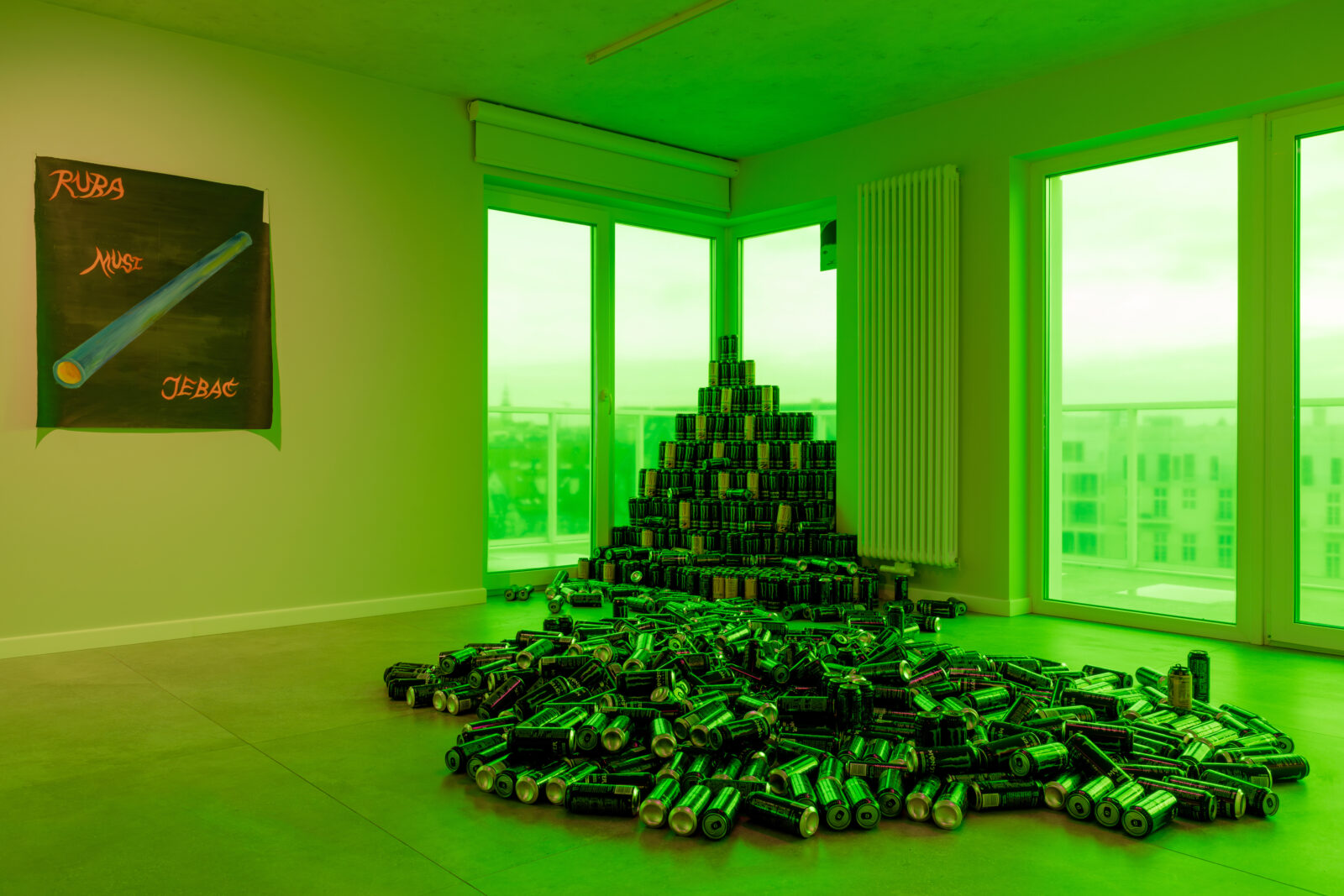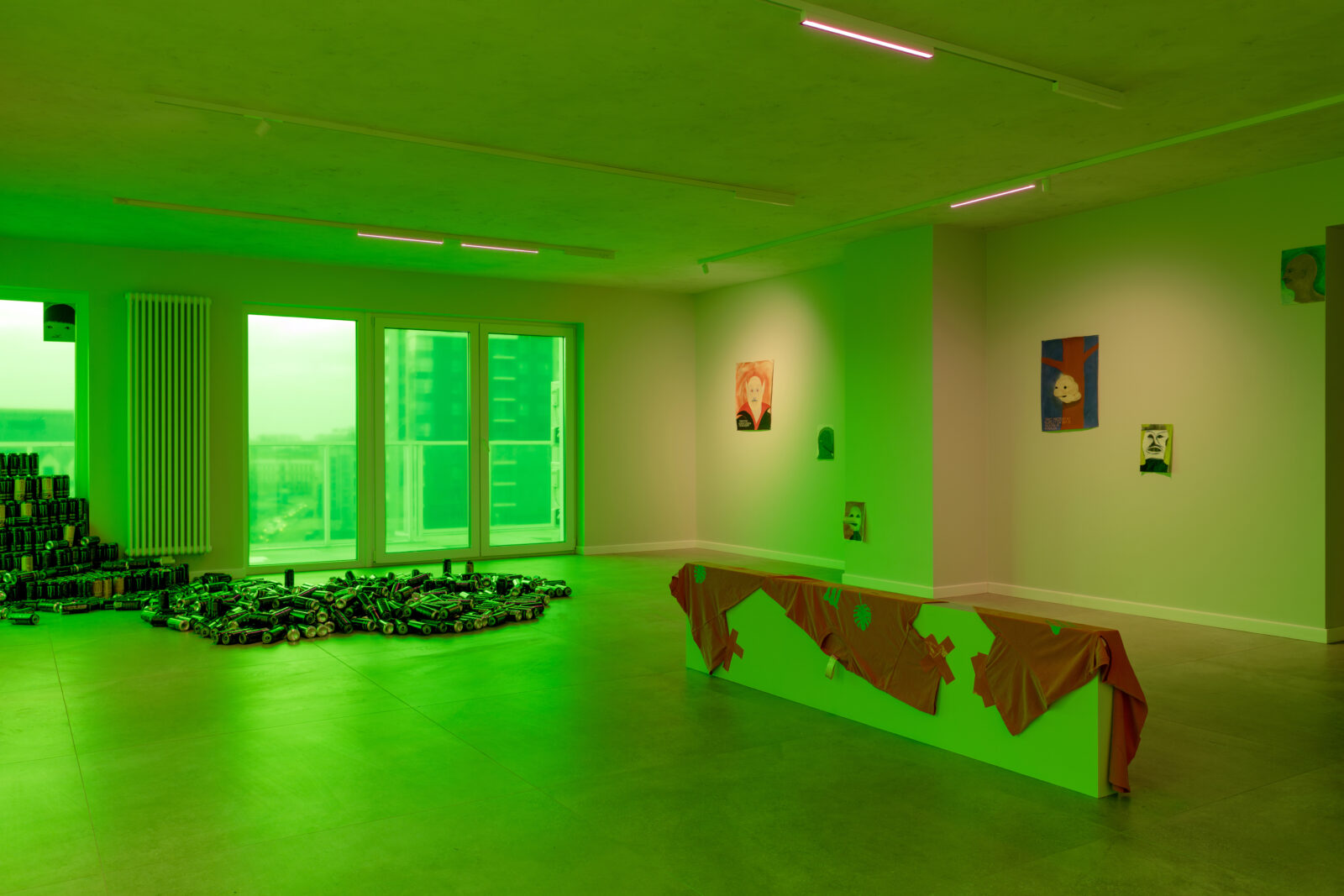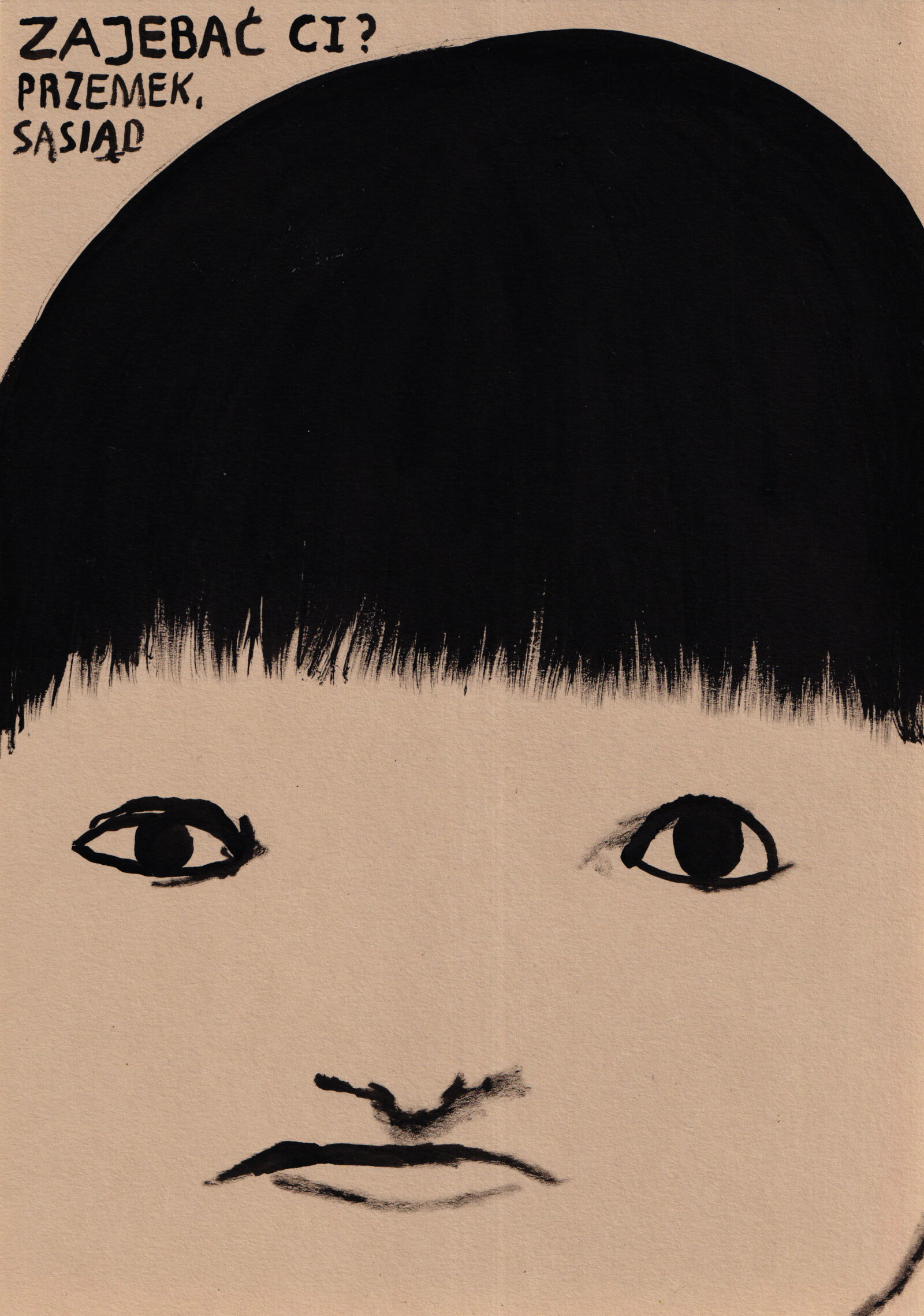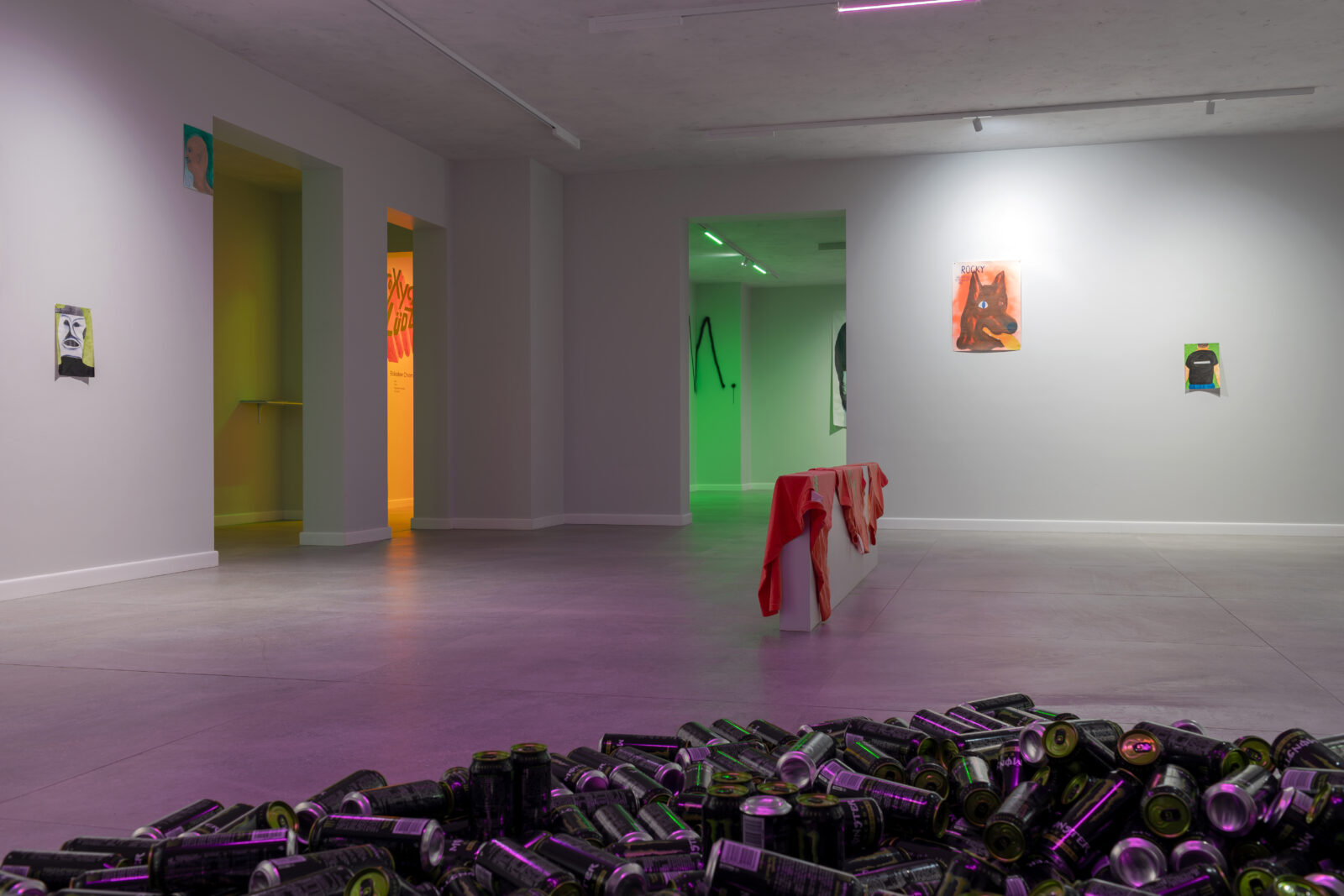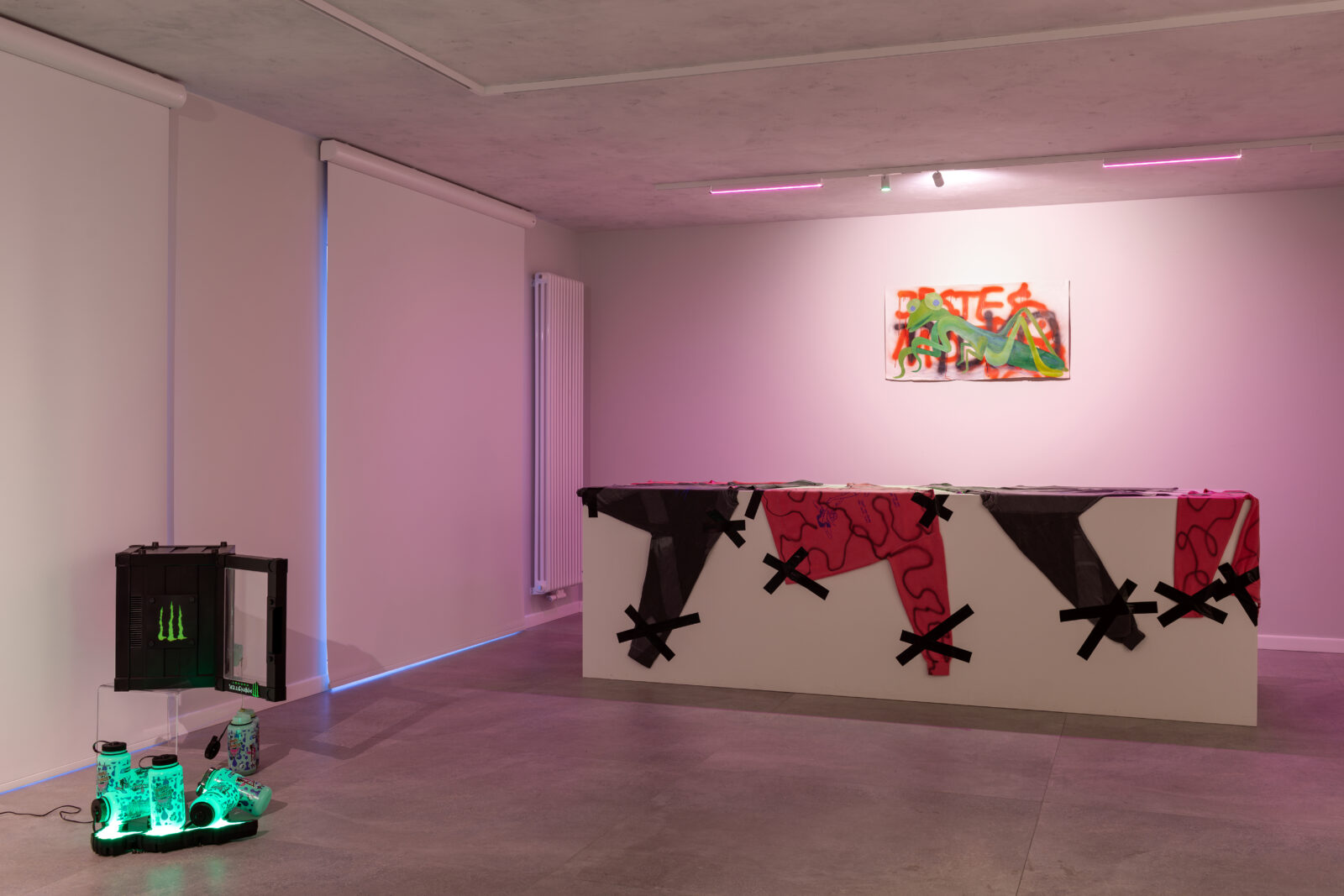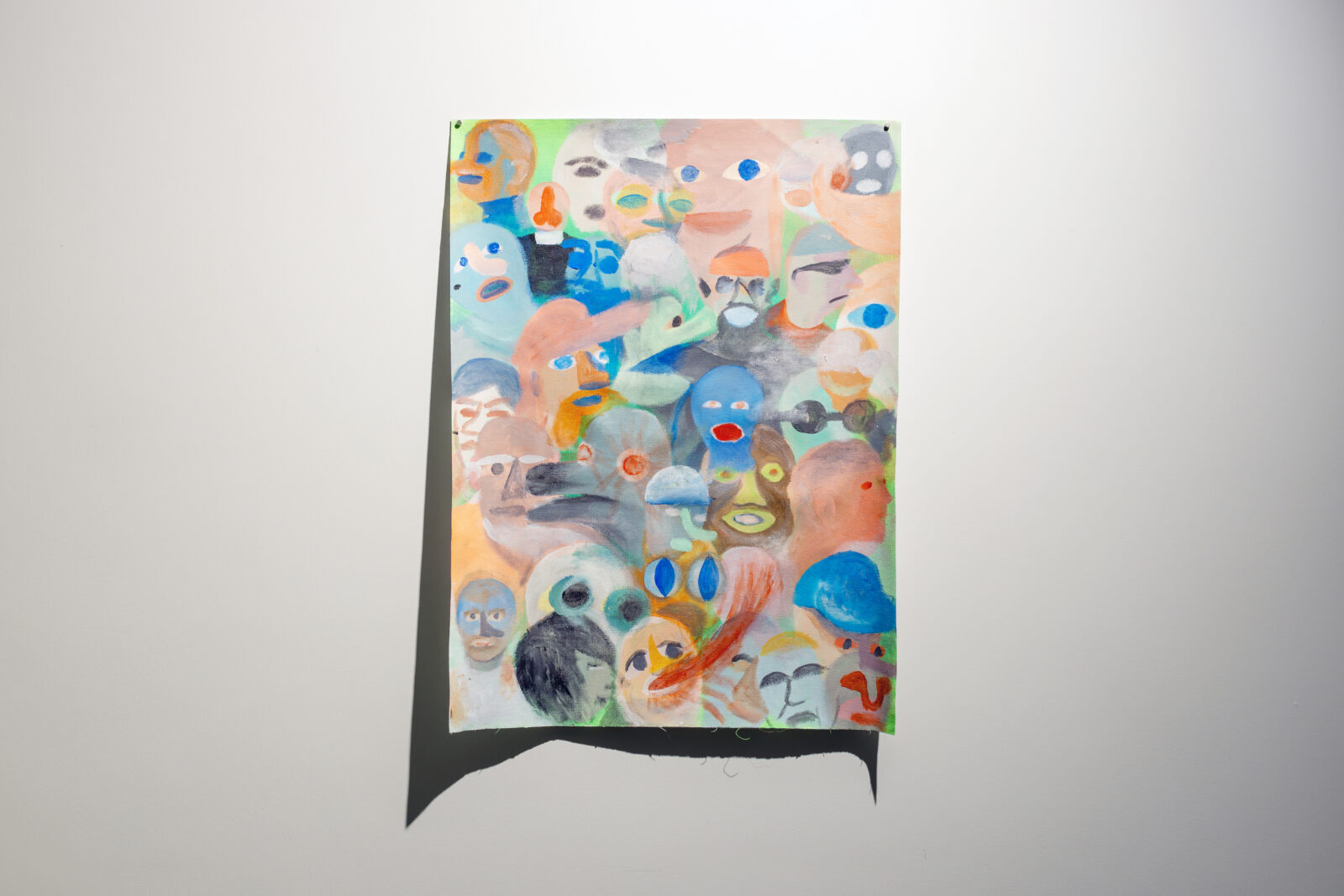Toxic People: Bolesław Chromry
feat: Chair, Magdalena Sawicka, DOOM 3K *
Boleslaw Chromry’s new solo exhibition is a painterly collection of portraits of toxic people from his life, where his memory extends from the present to his early childhood and school years. Among the characters depicted will be old friends, family, teachers and even personified four-legged figures. These silhouettes are described by Chromry through the essence extracted from their essence and the metaphorical and symbolic attributes attributed to them that make the presented characters seem familiar, close to them.
In this project, Chromry draws attention to fears and all that is unpleasant and uncomfortable – especially in relationships with others. He creates a kind of universal toxin, whose words or actions leave an emotional mark on someone who experiences it. He does this with the help of silhouettes of unspecified demonic creatures transforming into more abstract entities or quotes from the statements of specific characters. For this reason, the words with which he frames his works are as important an element as their visual layer.
A few years ago, Boleslaw Chromry created a work on a large-format canvas on which he inscribed a whole list of dozens of names of toxic (according to him) people. Some people who found themselves on the blacklist were even appalled and surprised to find themselves there. The painting represents a sort of symbolic beginning, which has returned as a series of works not only relating to his own experiences and hatred of others, but to a broader story about social oppression, stigmatization and the patterns we are thrown into like a spider’s web from a young age. In the painting series, Chromry dissects social expectations and family relationships, citing situations that can trigger unpleasant memories in us.
The fact that the traits of the DDD syndrome (children of dysfunctional homes) often come from different sources was written about by Joanna Flis in her book What’s Wrong with Me?. The millennial generation has grown up in many changes, where harmful patterns and schemes were passed on to us. For some reason, we were smuggled with golden advice not to feel, not to come out ahead, to work a lot and not to admit our mistakes or weaknesses, and to make our appearance fit into a rigidly defined
gender framework[1]. Such values were passed on to us in schools, the media, and churches, which was not necessarily related to the way our parents were raised. Because of which there was (and probably still is to some extent) a general acquiescence to seemingly innocent verbal oppression, which in the long run leaves a lasting mark. Chromry, through his use of characteristic memetic humor, smuggles in the bittersweet realities of life in post-transformation Poland.
The irony, careless aesthetics and hand-cut raw canvases highlight a time of childish naiveté. A time when we were unaware of the toxic patterns we would be dissecting in therapy rooms as adults. The artist’s own experience becomes a trigger for a broader
discussion about how this society that shaped us is poisoned. A common element in the system that has inflicted such a fate on us is certainly school, which continues to manifest itself in nightmares even in adulthood. “School alienates us […] makes us begin to mix concepts”[2] so that we don’t know what we ourselves want or what direction we want to go next, we are imposed on “good jobs” and our creativity is stifled. Teachers, grades, tardiness, homework, bullying by peers, are reflected back to us like hiccups in the form of stress and panic attacks at work, when we have long since left our family homes and are trying to function as adults. The education system, which is not adapted to modern needs, has not yet undergone fundamental changes since the early 19th century, when the Prussian model was established. Playing with associations and discomfort, the artist starts from very personal traumas and experiences, while talking about common ways of oppression that are close to everyone. By recreating memories and reckoning with a poisoned past, Chromry performs a cleansing reconstruction of the dream school, where the roles are reversed and all the unfriendly teachers end up on the donkey’s bench. The people recalled by Chromry – although anonymous to the viewer – become a symbolic collective wound, which we cover up with forgetfulness, ignorance or, on the contrary, tear up without
letting it heal. A twist is that through all the experiences evoked above, we become toxic to ourselves, or unaware of being toxic to others, even our loved ones. Chromry’s last work in this exhibition dots the i’s, leaving viewers with space for self-reflection.
[1] Joanna Flis, What’s wrong with me? On living in a dysfunctional home, environment in Poland and how we (not) deal with it, Znak Publishing House, Krakow 2023 (only polish version)
[2] Mikołaj Marcela, Selections. How schools destroy people, societies and the world,
Krakow 2021 (only polish version)
curator: Natalia Barczyńska
BOLESŁAW CHROMRY
(born 1987) – graduate of the Faculty of Graphic Arts at the Academy of Fine Arts in Cracow. He is a painter and illustrator. Under an artistic pseudonym, he creates graphic novels, zines, covers and posters. He is a columnist for USTA Magazine and Notes Na 6. Tygodni. Mostly collaborates with cultural institutions, art, press, publishing houses and media. He has illustrated for Gazeta Wyborcza, Wysokie Obcasy, Pismo, Szum and Contemporary Lynx, among others. Creator of hundreds of drawings commenting on post-transformation Poland. Through a seemingly careless visual-textual poetic narrative, he creates a drawing universe in which characters from pop culture, politics, and adolescence meet.



